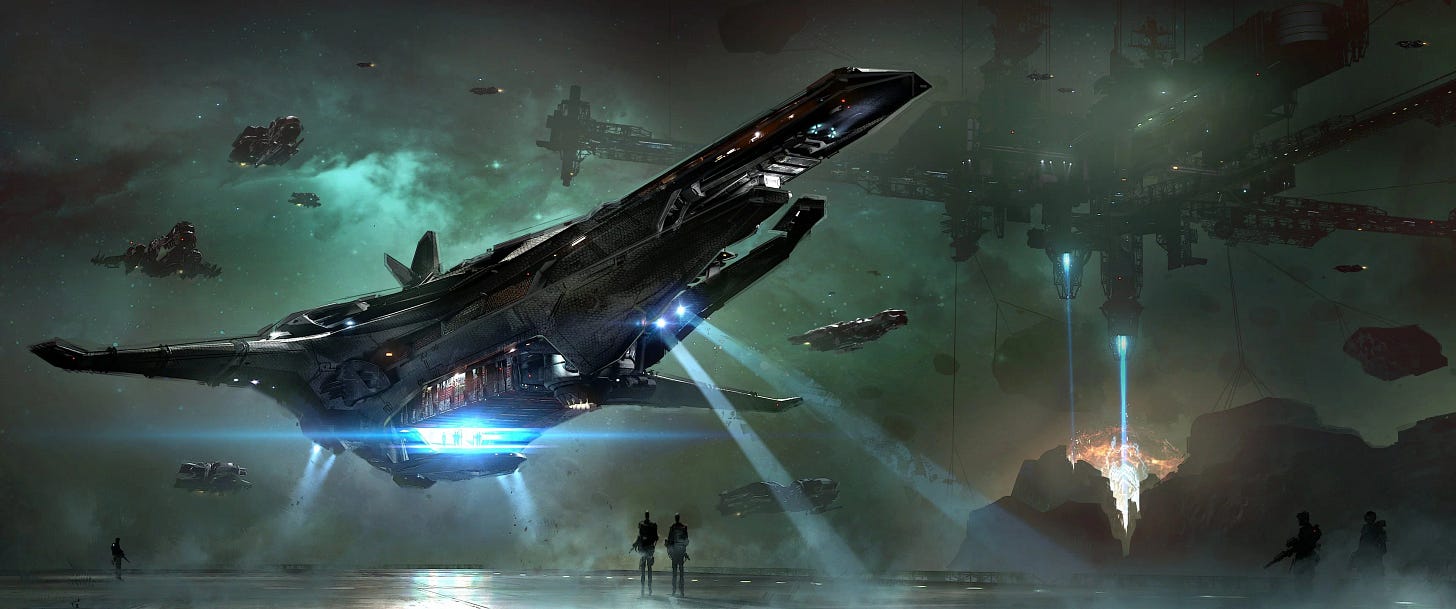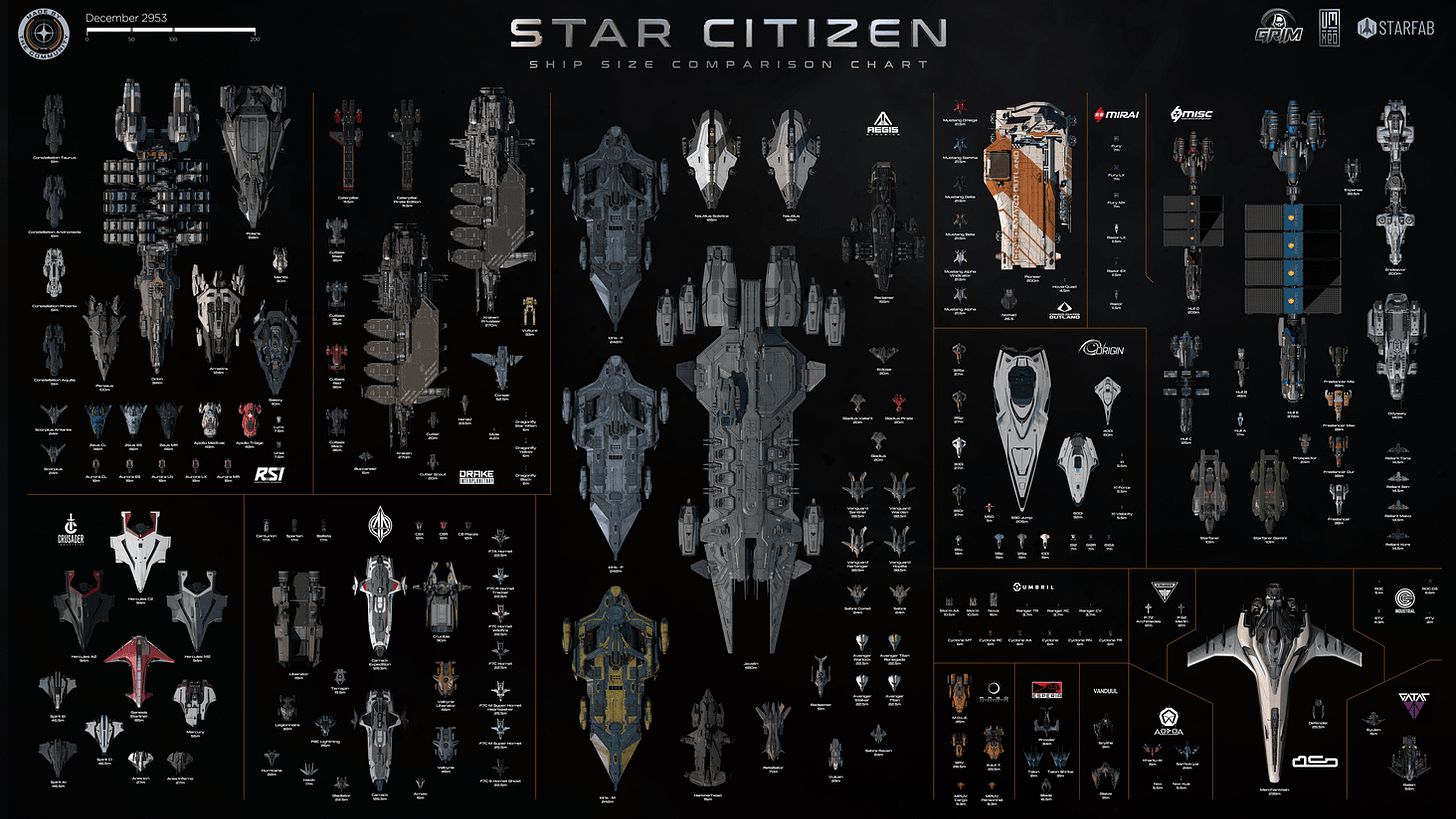Star Citizen: An $800 Million Odyssey Through Space and Development
Star Citizen's unprecedented journey through game development has shattered crowdfunding records while testing player patience to extraordinary lengths. Since its initial Kickstarter campaign in 2012, Cloud Imperium Games (CIG) has amassed over $800 million in funding for a game that remains unreleased after more than a decade of development. This research paper examines how Star Citizen achieved this remarkable funding milestone, why players continue to support it despite extensive delays, and what its development trajectory reveals about the challenges of creating ambitious MMOs in today's gaming landscape. The paper also analyzes current player metrics, compares Star Citizen to other space simulators, and evaluates whether this potentially billion-dollar project can deliver on its ambitious promises.
The Unprecedented Funding Journey Breaking Records One Ship Sale at a Time
Star Citizen's funding journey represents an unprecedented phenomenon in gaming history. What began as a modest $2.1 million Kickstarter campaign in April 2013 has evolved into the single largest crowdfunding project in the world. The game's funding growth has been astonishing, particularly in recent years, with half of its $800 million total ($400 million) being raised in just the last four years.
The funding timeline reveals an accelerating pattern:
$2.1 Million (April 2013) - Initial Kickstarter campaign
$50 Million (August 2014)
$100 Million (December 2015)
$200 Million (November 2018)
$300 Million (June 2020)
$400 Million (November 2021)
$500 Million (September 2022)
$600 Million (August 2023)
$700 Million (May 2024)
$800 Million (April 2025)
This acceleration is particularly notable, with the game raising $100 million in just 11 months between May 2024 and April 2025. At this rate, Star Citizen is on track to cross the $1 billion threshold within the next 1-2 years.
Funding Sources and Methods
The vast majority of Star Citizen's funding has come directly from its player community through various mechanisms:
Initial Crowdfunding: The project began with traditional crowdfunding through Kickstarter before moving to CIG's own platform.
Ship Sales: The primary ongoing funding mechanism has been the sale of virtual spaceships, some of which cost hundreds or even thousands of dollars. New ship releases, particularly during events like FleetWeek (scheduled for May 16, 2025), drive significant funding spikes.
External Investment: Beyond crowdfunding, CIG has secured external investment totalling $63.25 million as of March 2020.
Early Access Sales: Since releasing in early access in December 2017, the game has generated substantial revenue from new players purchasing starter packages.
In-Game Purchases: Additional cosmetics, upgrades, and subscriptions provide ongoing revenue streams.
What makes this funding model particularly remarkable is that much of the content being sold doesn't yet fully exist in the playable game, representing virtual promises more than finished products.
Feature Creep and Expanding Ambitions
The primary culprit behind Star Citizen's extended development appears to be "feature creep" – the continuous addition of new features and expanding scope. As funding increased, so did CIG's ambitions for the project, creating a self-perpetuating cycle: more money enabled more features, which in turn attracted more funding, which then enabled even more feature expansion.
Critics have pointed to micromanagement by key CIG leadership as another contributing factor to the delays. The project initially aimed to create a modern space simulator but has evolved into an attempt to create a comprehensive universe simulation with unprecedented detail and scale.
The Remarkably Patient Community Understanding Backer Psychology
Perhaps the most puzzling aspect of Star Citizen's development saga is the continued patience and financial support from its community despite years of delays. Several factors appear to explain this phenomenon:
Visionary Leadership: Many backers believe in Chris Roberts' vision based on his previous success with games like Wing Commander. As one analysis notes, "Gamers believe Chris Roberts because of nostalgia for Wing Commander".
Promise of the Ultimate Space Game: Backers are investing in the promise of an unprecedented gaming experience that doesn't exist elsewhere – "the promise of virtual worlds from past proven games visionaries that they follow like messiahs to a crowdfunding promised gameplay utopia".
Playable Alphas: Despite being incomplete, the game does provide playable experiences through its alpha releases, giving backers something tangible while they wait for the full release.
Community Investment: Many long-term backers have invested so much financially and emotionally that continuing to support the project becomes a form of sunk cost rationalization.
Transparent Development: CIG maintains a relatively transparent development process with regular updates, creating a sense of progress even when milestones shift.
Current State: A $800 Million Alpha Player Metrics and Engagement
Determining exact player numbers for Star Citizen is challenging due to CIG's selective disclosure of metrics, but available data provides some insights:
Daily player count estimates range from 27,700 (April 2025) to 78,295, indicating significant variance in tracking methodologies.
Total player base estimates range from approximately 24 million registered accounts.
CIG reported "more than a million" unique players logging "32 million hours" in the game during 2024, averaging approximately 3,800 concurrent players per hour.
The game has seen over 1 million unique players annually in recent years, with daily active users increasing from 30,000 in 2020 to 240,000 in 2022.
A concerning trend appears in recent data, with one source noting "new player signups down over 30%" and that "player numbers are actually quite a bit down" compared to previous years.
Development Insights for MMOs Lessons from Star Citizen's Development Marathon
Star Citizen's development journey offers several valuable insights for the broader MMO and game development industry:
Scope Management Is Critical: Star Citizen demonstrates how unchecked ambition can lead to perpetual development cycles. The continual expansion of features has prevented the completion of core gameplay systems.
Crowdfunding Creates Unique Pressures: The need to continually demonstrate progress to backers while simultaneously raising more funds has created a development environment focused on showcasing new features rather than completing existing ones.
Technical Challenges Scale Exponentially: Creating a seamless universe with the fidelity and complexity Star Citizen aims for reveals how technical hurdles can multiply with increased scope. The integration of disparate systems like FPS mechanics, space flight, economy, and persistence presents enormous challenges.
New Funding Models Transform Development: Star Citizen's continuous funding model differs dramatically from traditional publisher-backed development, allowing for extended timelines but also removing the discipline that fixed budgets impose.
Community Management Becomes Core Development: The need to maintain backer enthusiasm while managing expectations becomes a central development concern rather than a marketing function.
Conclusion
Star Citizen stands as both a remarkable achievement and a cautionary tale in game development. Its $800 million funding represents unprecedented community belief in a gaming vision, while its extended development timeline reveals the pitfalls of unchecked ambition.
The project challenges conventional understanding of game development economics, quality assessment, and player patience. No traditional publisher would fund a single game for over a decade without a finished product, yet Star Citizen's community has willingly done exactly that.
For the broader gaming industry, Star Citizen represents a fascinating case study in the possibilities and limitations of crowdfunding, community-driven development, and the pursuit of gaming's bleeding edge. Whether it ultimately delivers a billion-dollar experience or remains perpetually in development, Star Citizen has already secured its place in gaming history as an extraordinary experiment in pushing the boundaries of what games can be—and how much players are willing to invest in that promise.
Only time will tell if this cosmic gamble will result in the revolutionary space simulation its backers have funded, or if Star Citizen will remain adrift in development space—a brilliant vision that never quite reached its destination.





